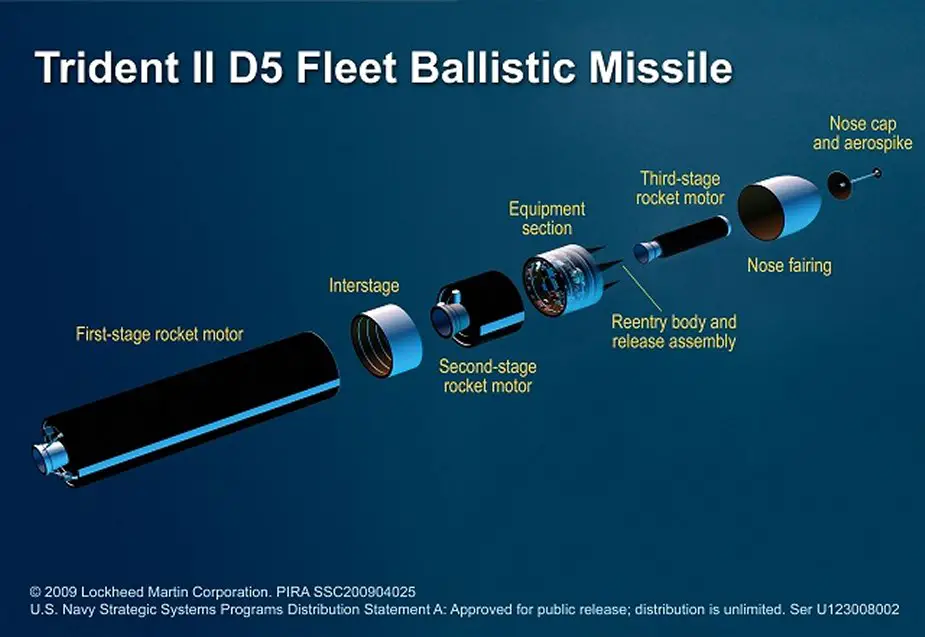According to information published by the U.S. Department of Defense on June 16, 2021, the Lockheed Martin Corp., Rotary and Mission Systems, Mitchel Field, New York, is awarded a $191,183,328 firm-fixed-price contract for the U.S. and United Kingdom to provide strategic weapon system Trident SSI Increment 8 production of inertial navigation systems and associated inertial spares for the Ohio and Columbia ballistic missile submarine shallow water submersible platforms for the fleet ballistic missile program.
Follow Navy Recognition on Google News at this link
 Trident II D5 Fleet Ballistic Missile components. (Picture source: Lockheed Martin)
Trident II D5 Fleet Ballistic Missile components. (Picture source: Lockheed Martin)
Work will be performed in Heath, Ohio (67%); Huntington Beach, California (21%); Mitchel Field, New York (9%); and Manassas, Virginia (3%), with an expected completion date of Feb. 28, 2028.
Fiscal 2021 other procurement (Navy) contract funds in the amount of $31,321,581 will be obligated; and fiscal 2021 shipbuilding and conversion (Navy) contract funds in the amount of $8,805,772, will be obligated on initial award. No funds will expire at the end of the current fiscal year. This contract was a sole-source acquisition in accordance with 10 U.S. Code 2304(c)(1) and (4). Strategic Systems Programs, Washington, D.C., is the contracting activity.
The UGM-133A Trident II, or Trident D5 is a submarine-launched ballistic missile (SLBM), built by Lockheed Martin Space in Sunnyvale, California, and deployed with the American and British navies. It was first deployed in March 1990, and remains in service. The Trident II Strategic Weapons System is an improved SLBM with greater accuracy, payload, and range than the earlier Trident C-4. It is a key element of the U.S. strategic nuclear triad and strengthens U.S. strategic deterrence.
The Trident II is considered to be a durable sea-based system capable of engaging many targets. It enhances the U.S. position in strategic arms negotiation with performance and payload flexibility that can accommodate active treaty initiatives (see New START). The Trident II's increased payload allows nuclear deterrence to be accomplished with fewer submarines, and its high accuracy—approaching that of land-based missiles—enables it to be used as a first strike weapon.



